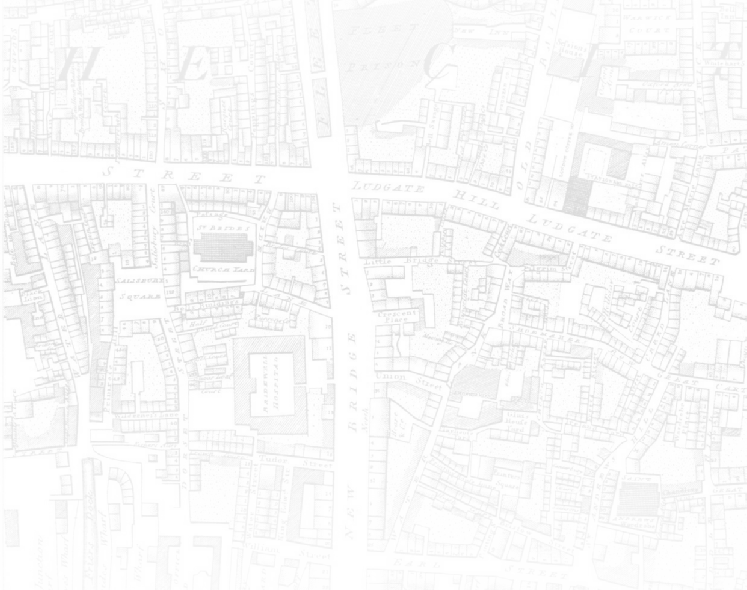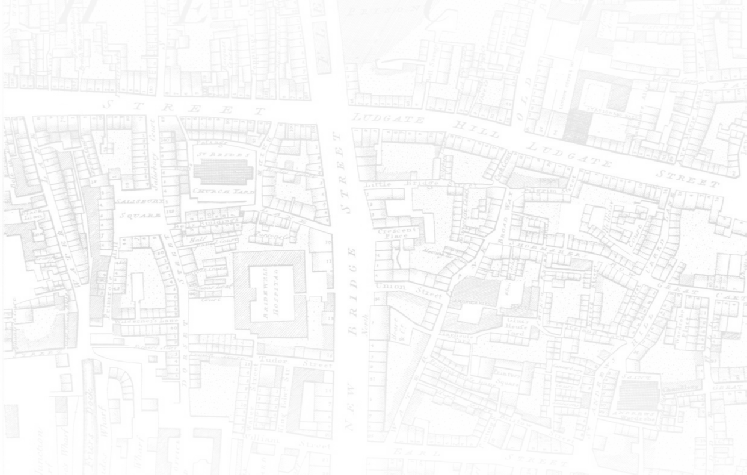

17th- and 18th-century London


All contents of this website © 2008 Stephen Willis
To Top of Page
By the 19th century the Newbons had become very much a London family. The scenes sketched so memorably by Dickens would thus have been second nature to them. But during the previous century, still in the aftermath of the Great Fire of London, London was a more optimistic city, very much in the business of reinventing itself.
By the time Richard Newbon of Westminster married Elizabeth Aslaby at St Clement Danes in 1718 the London Samuel Pepys had so vividly described half a century before had changed beyond recognition. In place of the medieval lanes in which Pepys had grown up a new metropolis had sprung up from the ashes of the Great Fire of 1666, largely designed by Sir Christopher Wren. The old Norman St Paul’s Cathedral, like so many other churches (including St Bride’s, Fleet Street, where Pepys had been baptised), had been replaced by Wren’s buildings.
Richard Newbon of Westminster spent the last decade of his life living in Charges Street, just off Piccadilly. He was most likely the first occupier of his house in this new fashionable west-
Many books help us get a feeling for life in London past. Among the most informative are those by Liza Picard. Her Dr. Johnson’s London gives a detailed account of London life between 1740 and 1770, the period when Walter Newbon and other members of the family arrived in London.
The London of Samuel Pepys
One of the most fruitful sources of information about the London of any bygone age is undoubtedly the so-
Pepys was born in 1633 in Salisbury Court, just off Fleet Street at the western edge of the City of London, the 5th of 11 children born to John Pepys, a tailor, and his wife Margaret – only 4 of these children survived to adulthood and Samuel was both the eldest and the longest lived of them, dying in 1703 after a long career of distinguished civil service.
Parallels between the Pepys and Newbon families
It seems reasonable to assume that Richard Newbon the Elder (almost certainly the first member of the family to come to the capital) arrived in London during the last years of Samuel Pepys’s life, but it is not until later in the 18th century, once Walter Newbon’s family had become established in Blackfriars, that parallels between the Pepys family and the Newbons arise:
|
|
Walter Newbon’s son Charles (1784-
|
|
|
Like Pepys’s father John, Charles Newbon followed the trade of a tailor. We know little of Charles Newbon’s business but, also like John Pepys, he was able to leave the City of London later in life. Charles Newbon retired south of the river to the up-
|
|
|
Charles Newbon’s father Walter left his native Northamptonshire to start his apprenticeship in London at much the same age as John Pepys had left for the City.
|
|
|
It is interesting to note that the Pepys family kept close contact across the miles. Samuel visited his family on numerous occasions, not least when his father John took over his eldest brother’s house at Brampton in 1661. The London Newbons certainly kept abreast of life in Northamptonshire (see Richard Newbon of Blackfriars -
|
| Site Map |
| Background to my research |
| Background to the surname NEWBON |
| Documents available and sources used |
| Name index |
| Walter Newbon's descendants |
| Northamptonshire Newbons |
| Redbourn, Hertfordshire |
| James Shelton Newbon |
| Henry Newbon |
| The Crickmer family |
| The Newbon Family and the City of London |
| Charles Evans Newbon |
| Joseph Newbon |
| The Brockelbank Family |
| The United Wards' Club of the City of London |
| John Newbon |
| The Children of John Newbon |
| World War I |
| Walter Thomas Newbon |
| The Newbon Family of Northamptonshire |
| Northamptonshire, the early home of the Newbon Family |
| King's Cliffe |
| Records of King's Cliffe |
| Maps of King's Cliffe |
| Links with elsewhere |
| News 2014 |
| News 2013 |
| News 2012 |
| News 2011 |
| News 2010 |
| News 2009 |
| News 2008 |
| Updates |
| To do |
| Guestbook |